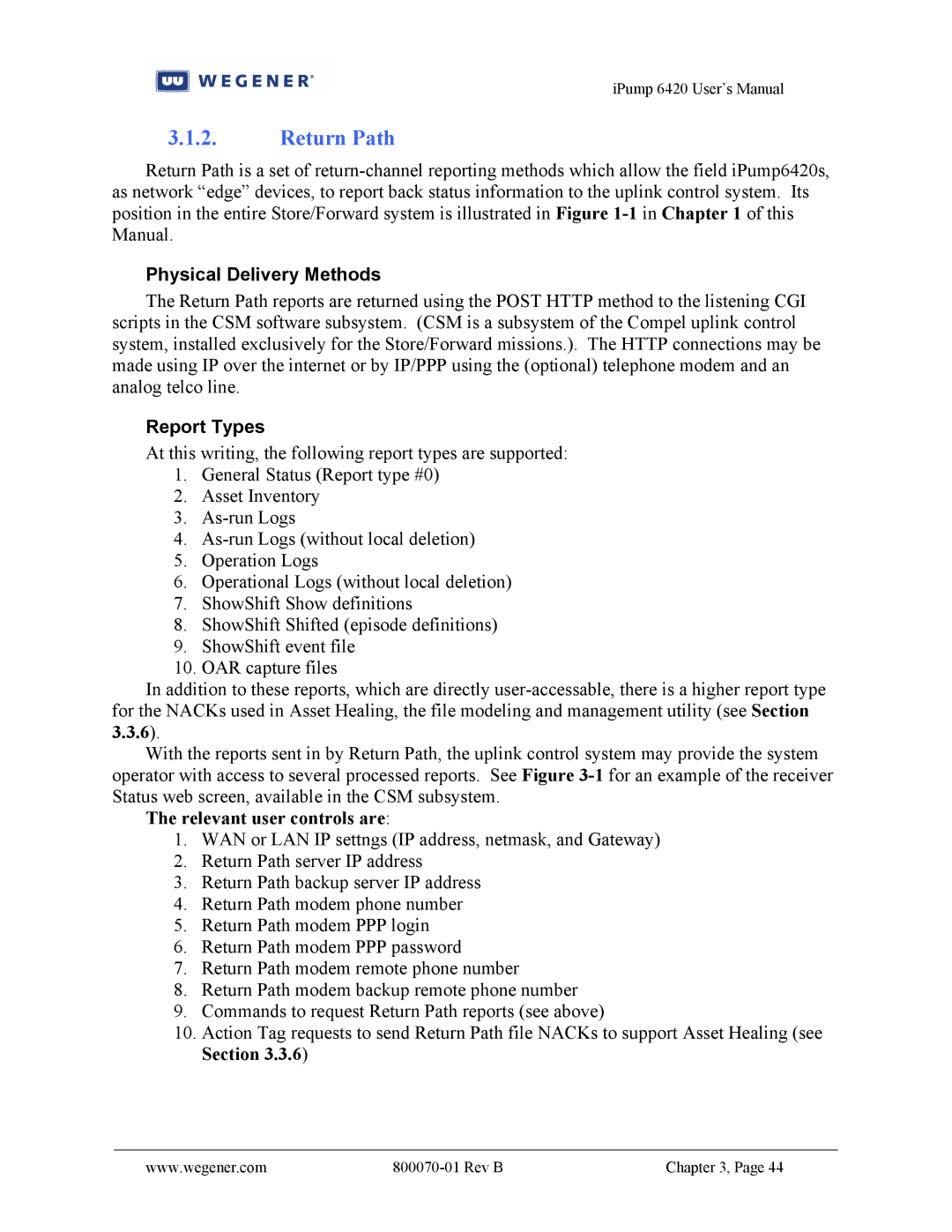
iPump 6420 User’s Manual
3.1.2.Return Path
Return Path is a set of
Physical Delivery Methods
The Return Path reports are returned using the POST HTTP method to the listening CGI scripts in the CSM software subsystem. (CSM is a subsystem of the Compel uplink control system, installed exclusively for the Store/Forward missions.). The HTTP connections may be made using IP over the internet or by IP/PPP using the (optional) telephone modem and an analog telco line.
Report Types
At this writing, the following report types are supported:
1.General Status (Report type #0)
2.Asset Inventory
3.
4.
5.Operation Logs
6.Operational Logs (without local deletion)
7.ShowShift Show definitions
8.ShowShift Shifted (episode definitions)
9.ShowShift event file
10.OAR capture files
In addition to these reports, which are directly
With the reports sent in by Return Path, the uplink control system may provide the system operator with access to several processed reports. See Figure
The relevant user controls are:
1.WAN or LAN IP settngs (IP address, netmask, and Gateway)
2.Return Path server IP address
3.Return Path backup server IP address
4.Return Path modem phone number
5.Return Path modem PPP login
6.Return Path modem PPP password
7.Return Path modem remote phone number
8.Return Path modem backup remote phone number
9.Commands to request Return Path reports (see above)
10.Action Tag requests to send Return Path file NACKs to support Asset Healing (see Section 3.3.6)
www.wegener.com |
| Chapter 3, Page 44 |
